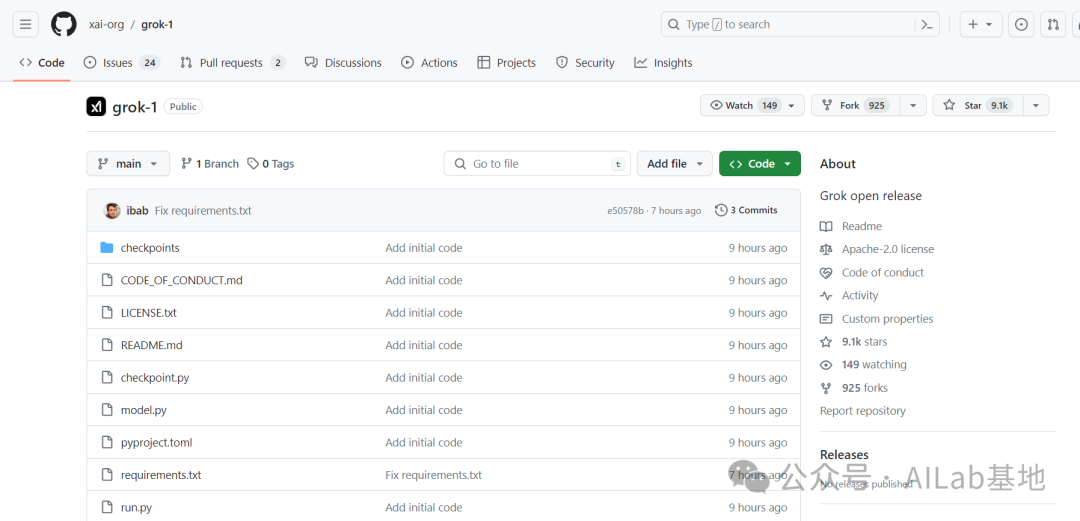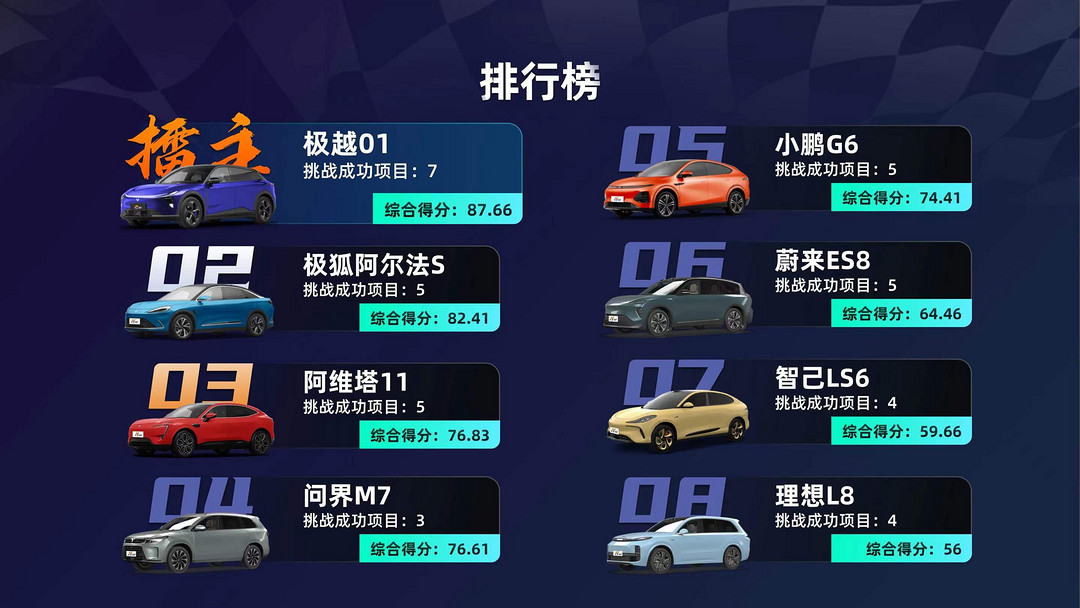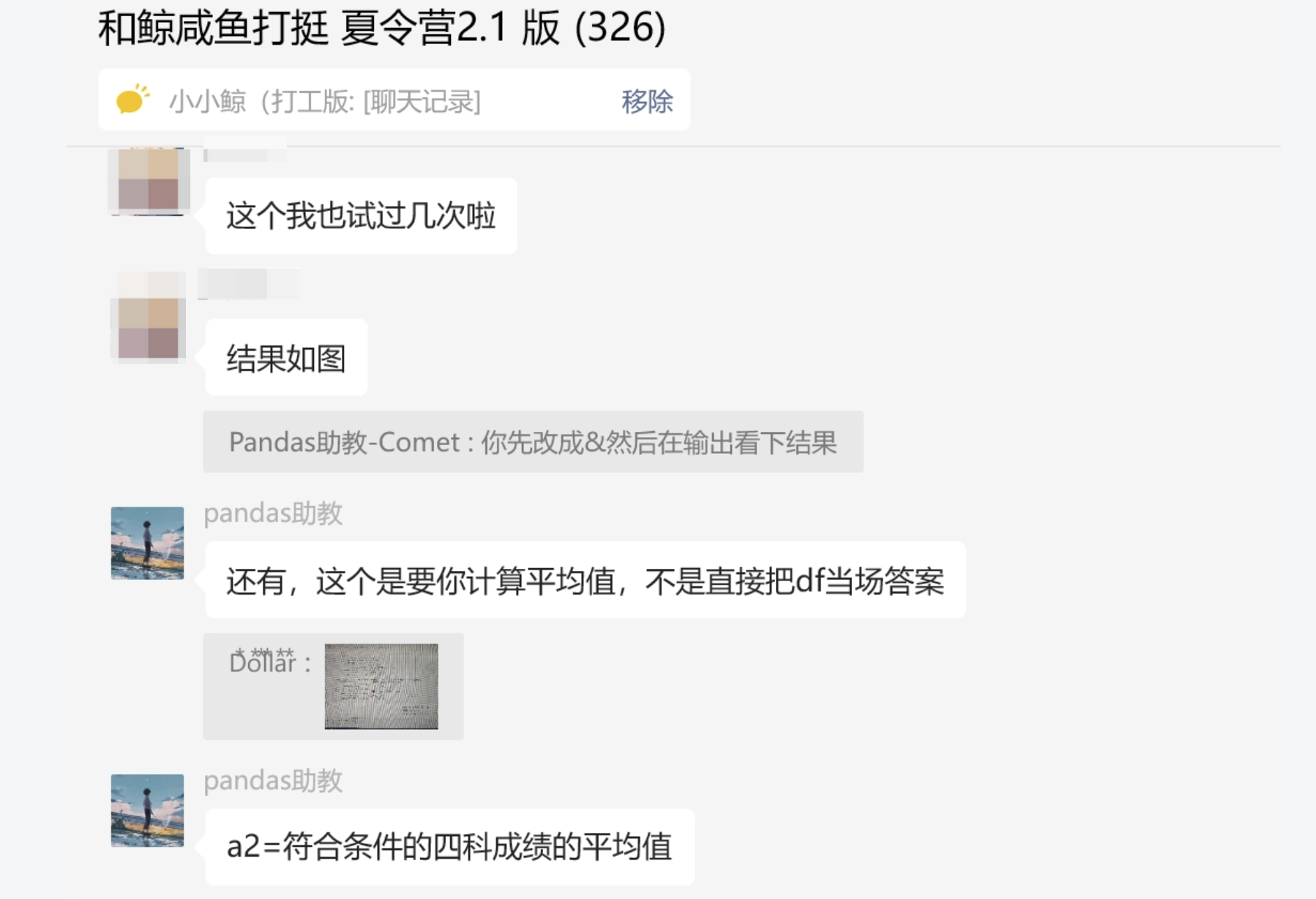使用代码,看卷积是如何计算的。
torch.nn
torch.nn.functional
srtide 的用法,代表卷积核的步幅
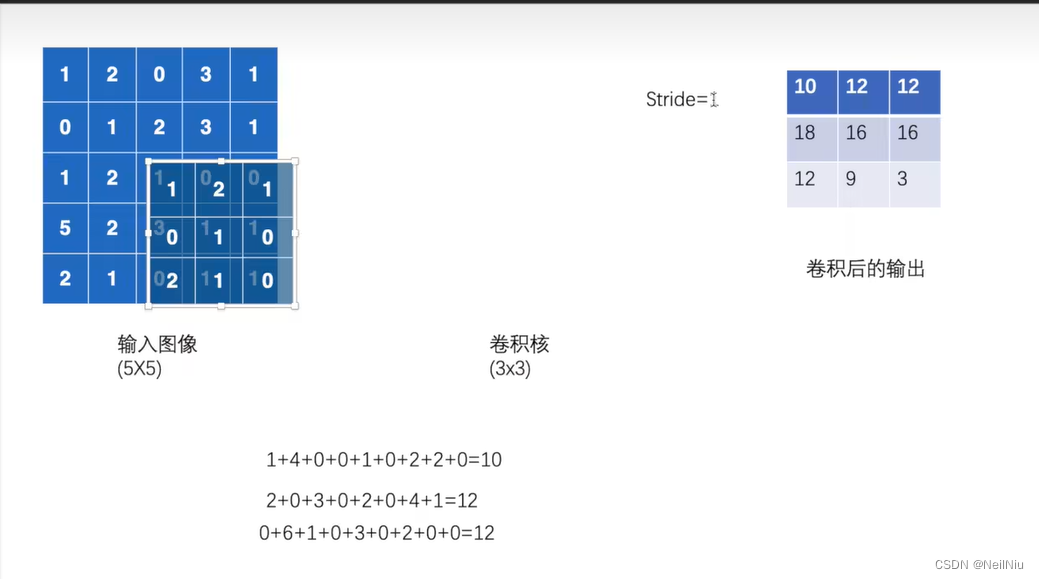
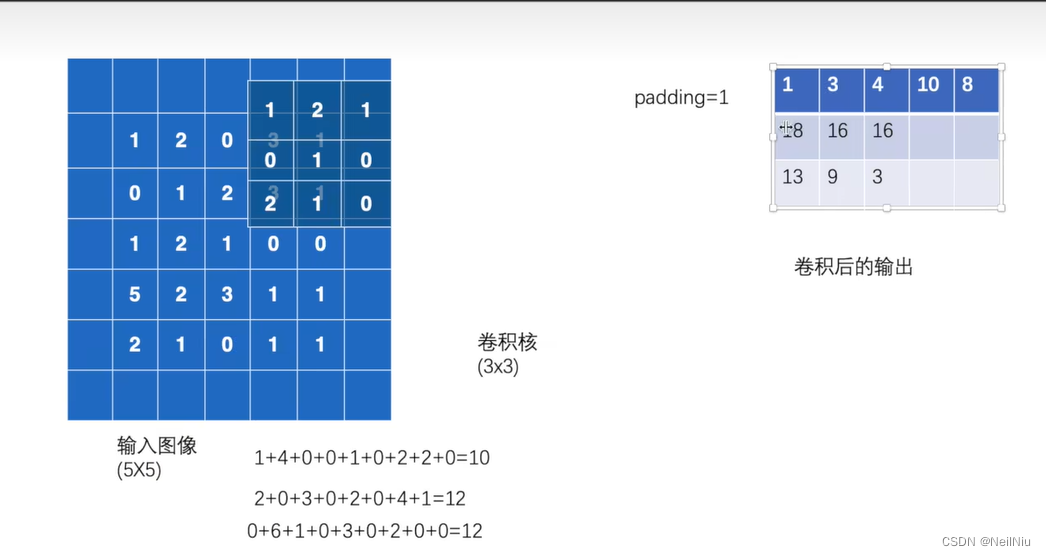
import torch
import torch.nn.functional as F
# 这个是输入的一个二维矩阵
input = torch.tensor([[1,2,0,3,1],
[0,1,2,3,1],
[1,2,1,0,0],
[5,2,3,1,1],
[2,1,0,1,1]
])
kernel = torch.tensor([[1,2,1],
[0,1,0],
[2,1,0]
])
# 尺寸变化,5*5 ,3*3
input = torch.reshape(input, (1,1,5,5))
kernel = torch.reshape(kernel, (1,1,3,3))
print(input.shape)
print(kernel.shape)
# stride 代表每次移动的次数或者步幅
output = F.conv2d(input, kernel, stride=1)
print(output)
output2 = F.conv2d(input, kernel, stride=2)
print(output2)
output3 = F.conv2d(input, kernel, stride=1,padding=1)
print(output3)
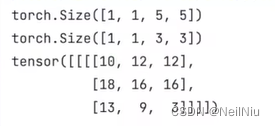
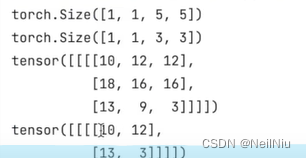
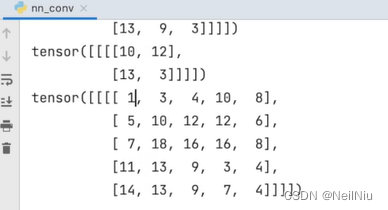
padding 的用法为1的时候,代表把之前的矩阵四周拓展一个像素,
卷积层的使用
图片的一般都是二维矩阵,都使用CONV2D,1D 和3D用的较少
CLASStorch.nn.Conv2d(in_channels, out_channels, kernel_size, stride=1, padding=0, dilation=1, groups=1, bias=True, padding_mode='zeros', device=None, dtype=None)[SOURCE
in_channels 输入的通道数
out_channels 输出的通道数
kernel_size 卷积核的大小
stride=1 卷积核的步幅大小
padding =0 对原始数据的一个填充数
dilation =1 卷积核的对应位
groups =1
bias =True 对卷积后的数是否加减一个数
padding_mode=‘zeros’
Parameters:
输入的通道数
in_channels (int) – Number of channels in the input image
输出的通道数 当等于2,就会出现2个卷积核,就会有两个输出
out_channels (int) – Number of channels produced by the convolution
卷积核的大小例如设置为3, 卷积核就是3*3,训练过程中不断的调整。
kernel_size (int or tuple) – Size of the convolving kernel
卷积核移动的步幅
stride (int or tuple, optional) – Stride of the convolution. Default: 1
填充
padding (int, tuple or str, optional) – Padding added to all four sides of the input. Default: 0
填充的地方设置为0
padding_mode (str, optional) – 'zeros', 'reflect', 'replicate' or 'circular'. Default: 'zeros'
dilation (int or tuple, optional) – Spacing between kernel elements. Default: 1
groups (int, optional) – Number of blocked connections from input channels to output channels. Default: 1
偏置
bias (bool, optional) – If True, adds a learnable bias to the output. Default: True
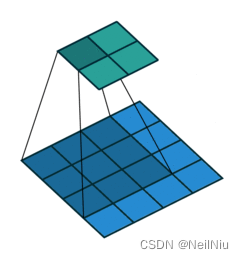
动图,蓝色部分为输入图像,青色部分为输出图像
卷积层,
池化层
最常用的nn.MaxPool2d
torch.nn.MaxPool2d(kernel_size, stride=None, padding=0, dilation=1, return_indices=False, ceil_mode=False)
kernel_size (Union[int, Tuple[int, int]]) – the size of the window to take a max over
stride (Union[int, Tuple[int, int]]) – the stride of the window. Default value is kernel_size
padding (Union[int, Tuple[int, int]]) – Implicit negative infinity padding to be added on both sides
dilation (Union[int, Tuple[int, int]]) – a parameter that controls the stride of elements in the window
return_indices (bool) – if True, will return the max indices along with the outputs. Useful for torch.nn.MaxUnpool2d later
ceil_mode (bool) – when True, will use ceil instead of floor to compute the output shape
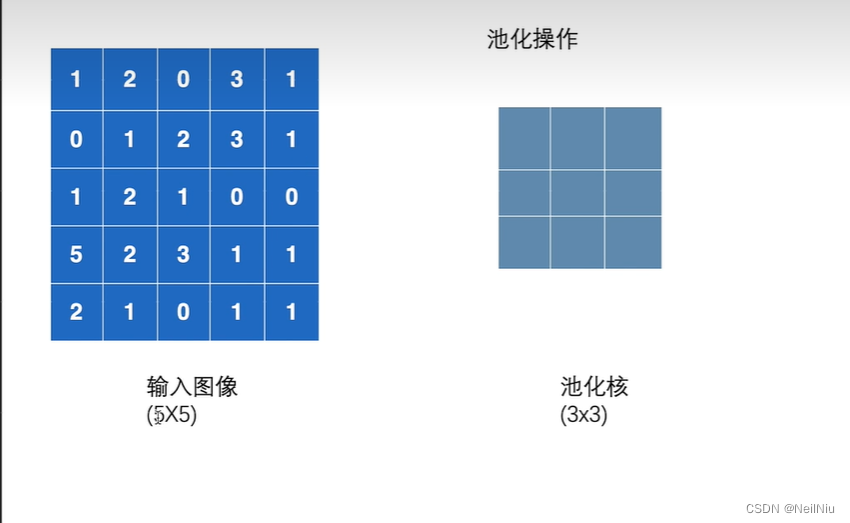
cell_mode 为True的时候,要保留最大的值,当cell_mode为False的时候,不保留最大值。
import torch
import torchvision
from torch import nn
from torch.nn import MaxPool2d
from torch.utils.data import DataLoader
from torch.utils.tensorboard import SummaryWriter
dataset = torchvision.datasets.CIFAR10("../data", train=False, download=True,
transform=torchvision.transforms.ToTensor())
dataloader = DataLoader(dataset, batch_size=64)
class Tudui(nn.Module):
def __init__(self):
super(Tudui, self).__init__()
self.maxpool1 = MaxPool2d(kernel_size=3, ceil_mode=False)
def forward(self, input):
output = self.maxpool1(input)
return output
tudui = Tudui()
writer = SummaryWriter("../logs_maxpool")
step = 0
for data in dataloader:
imgs, targets = data
writer.add_images("input", imgs, step)
output = tudui(imgs)
writer.add_images("output", output, step)
step = step + 1
writer.close()
为什么池化的作用,保留输入的一个特征,同时把数据量减小,数据量减小了,训练的更快
经过一层卷积之后,来一层池化,然后再来一次非线性激活。
非线性激活层,RELU
import torch
import torchvision
from torch import nn
from torch.nn import ReLU, Sigmoid
from torch.utils.data import DataLoader
from torch.utils.tensorboard import SummaryWriter
input = torch.tensor([[1, -0.5],
[-1, 3]])
input = torch.reshape(input, (-1, 1, 2, 2))
print(input.shape)
dataset = torchvision.datasets.CIFAR10("../data", train=False, download=True,
transform=torchvision.transforms.ToTensor())
dataloader = DataLoader(dataset, batch_size=64)
class Tudui(nn.Module):
def __init__(self):
super(Tudui, self).__init__()
self.relu1 = ReLU()
self.sigmoid1 = Sigmoid()
def forward(self, input):
output = self.sigmoid1(input)
return output
tudui = Tudui()
writer = SummaryWriter("../logs_relu")
step = 0
for data in dataloader:
imgs, targets = data
writer.add_images("input", imgs, global_step=step)
output = tudui(imgs)
writer.add_images("output", output, step)
step += 1
writer.close()
非线性变换的主要目的就是网络中引入一些非线性特征,非线性越多,才会训练出符合各种曲线,各种特征的一个模型,
正则化层
线性层
import torch
import torchvision
from torch import nn
from torch.nn import Linear
from torch.utils.data import DataLoader
dataset = torchvision.datasets.CIFAR10("../data", train=False, transform=torchvision.transforms.ToTensor(),
download=True)
dataloader = DataLoader(dataset, batch_size=64)
class Tudui(nn.Module):
def __init__(self):
super(Tudui, self).__init__()
self.linear1 = Linear(196608, 10)
def forward(self, input):
output = self.linear1(input)
return output
tudui = Tudui()
for data in dataloader:
imgs, targets = data
print(imgs.shape)
output = torch.flatten(imgs)
print(output.shape)
output = tudui(output)
print(output.shape)
Sequential
CIFAR 10 model 结构, 的网络结构
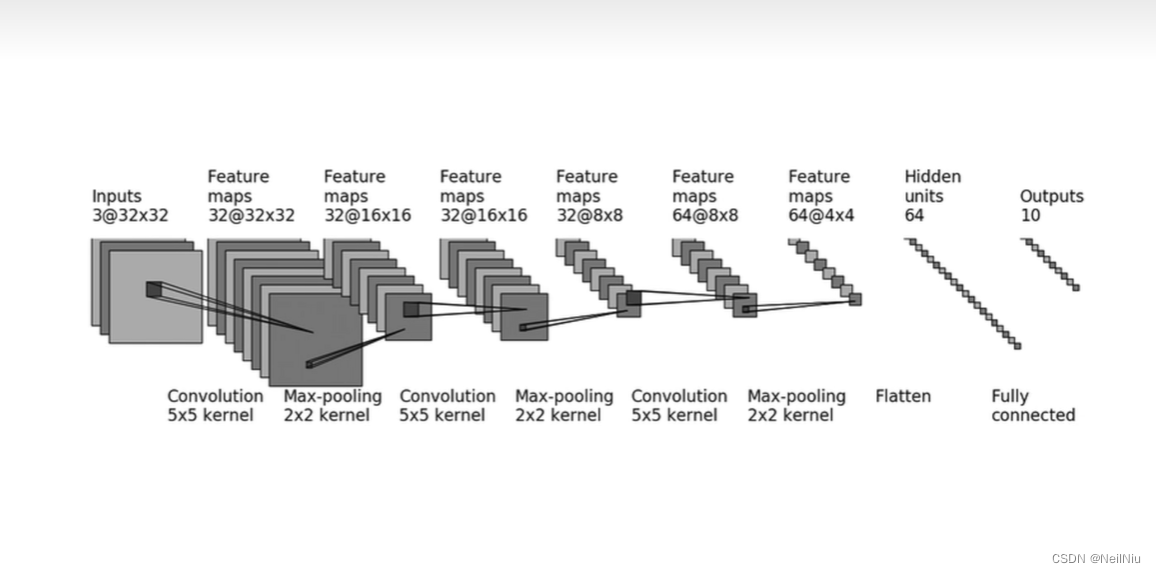

import torch
from torch import nn
from torch.nn import Conv2d, MaxPool2d, Flatten, Linear, Sequential
from torch.utils.tensorboard import SummaryWriter
class Tudui(nn.Module):
def __init__(self):
super(Tudui, self).__init__()
self.model1 = Sequential(
Conv2d(3, 32, 5, padding=2),
MaxPool2d(2),
Conv2d(32, 32, 5, padding=2),
MaxPool2d(2),
Conv2d(32, 64, 5, padding=2),
MaxPool2d(2),
Flatten(),
Linear(1024, 64),
Linear(64, 10)
)
def forward(self, x):
x = self.model1(x)
return x
tudui = Tudui()
print(tudui)
input = torch.ones((64, 3, 32, 32))
output = tudui(input)
print(output.shape)
writer = SummaryWriter("../logs_seq")
writer.add_graph(tudui, input)
writer.close()
损失函数与反向传播
3.1 计算实际输出和目标之间的差距(损失函数)
3.2 为更新输出提供一定的依据(反向传播) grad 梯度下降
当使用反向传播的时候,每个节点,或者每个要更新的参数,都会求出一个对应的梯度,然后对参数进行优化,最终达到Loss降低的目的, 梯度下降
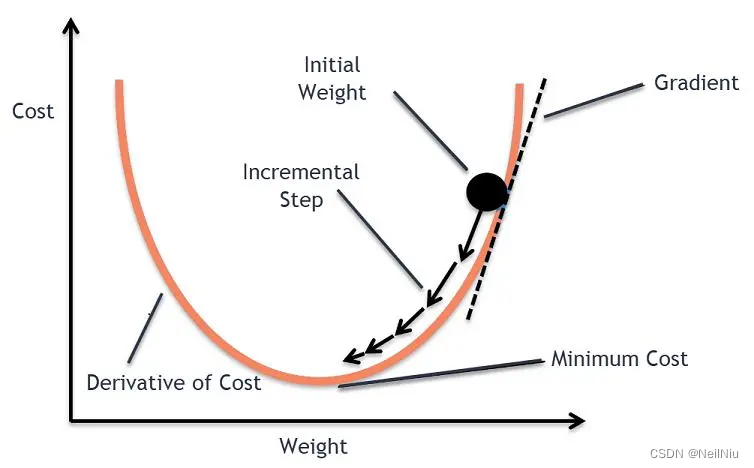
误差Loss 越小越好
Loss Function用于分析实际输出与目标之间的差距。
1、L1Loss
2、MSELoss 平方差
3、CrossEntropyLoss(交叉熵损失)
当训练分类问题的时候,
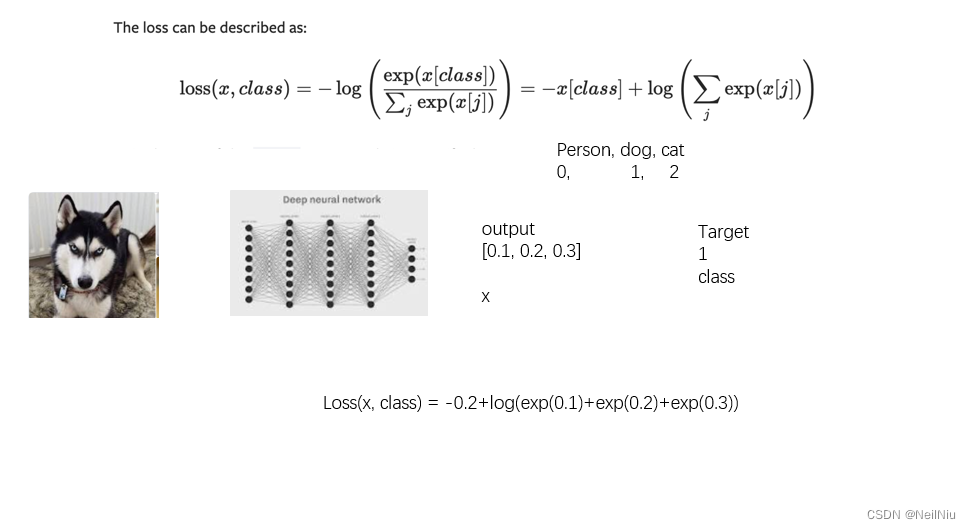
-0.2+ln(exp(0.1)+exp(0.2)+exp(0.3))
# Loss Function:(CrossEntropyLoss)https://pytorch.org/docs/stable/generated/torch.nn.CrossEntropyLoss.html#torch.nn.CrossEntropyLoss
import torch
from torch import nn
x = torch.tensor([0.1, 0.2, 0.3])
y = torch.tensor([1])
x = torch.reshape(x, (1, 3))
loss_cross = nn.CrossEntropyLoss()
result_cross = loss_cross(x, y)
print(result_cross) # tensor(1.1019)
运行结果
tensor(1.1019)
Process finished with exit code 0
3.4交叉熵在神经网络的运用
import torch
from torch import nn
import torchvision
# 准备数据集:
from torch.utils.data import DataLoader
dataset = torchvision.datasets.CIFAR10("./7dataset", train=False, download=True,
transform=torchvision.transforms.ToTensor())
dataloader = DataLoader(dataset, batch_size=1, drop_last=True)
# 搭建神经网络:
class Model(nn.Module):
def __init__(self):
super(Model, self).__init__()
self.model1 = nn.Sequential(
nn.Conv2d(3, 32, 5, padding=2),
nn.MaxPool2d(2),
nn.Conv2d(32, 32, 5, padding=2),
nn.MaxPool2d(2),
nn.Conv2d(32, 64, 5, padding=2),
nn.MaxPool2d(2),
nn.Flatten(),
nn.Linear(1024, 64),
nn.Linear(64, 10)
)
def forward(self, x):
x = self.model1(x)
return x
if __name__ == "__main__":
loss = nn.CrossEntropyLoss()
model_1 = Model()
for data in dataloader:
imgs, targets = data
outputs = model_1(imgs)
result_loss = loss(outputs, targets)
print(result_loss) # 计算神经网络输出与实际的误差
# 反向传播,梯度下降
result_loss.backward() # 能够生成梯度
print("ok")
优化器
反向传播可以求出每个需要调节的参数,每个参数对应的梯度,有了梯度就可以利用优化器,这个优化器对参数进行调整,以达到整体误差降低的目的。
Torch.optim
设置
# 官方文档:https://pytorch.org/docs/stable/optim.html
# lr(learning rate):学习速率
import torch
import torchvision
from torch import nn
from torch.utils.data import DataLoader
dataset = torchvision.datasets.CIFAR10("../7. dataset", train=False, transform=torchvision.transforms.ToTensor(),
download=True)
dataloader = DataLoader(dataset, batch_size=1, drop_last=True)
class Model(nn.Module):
def __init__(self):
super(Model, self).__init__()
self.model1 = nn.Sequential(
nn.Conv2d(3, 32, 5, padding=2),
nn.MaxPool2d(2),
nn.Conv2d(32, 32, 5, padding=2),
nn.MaxPool2d(2),
nn.Conv2d(32, 64, 5, padding=2),
nn.MaxPool2d(2),
nn.Flatten(),
nn.Linear(1024, 64),
nn.Linear(64, 10)
)
def forward(self, x):
x = self.model1(x)
return x
loss = nn.CrossEntropyLoss()
model_1 = Model()
# 1. 设置优化器:(设置随机梯度下降优化器)
optim = torch.optim.SGD(model_1.parameters(), lr=0.01) # lr不能设置得太大或太小,太大模型会不稳定,太小模型训练会很慢(推荐开始选择较大的lr,后面选择较小的lr)
for epcoh in range(5): # 循环几次就是尽行几轮学习
running_loss = 0.0 # 保存整体误差总和
for data in dataloader: # 仅进行了一轮的学习
imgs, targets = data
outputs = model_1(imgs)
result_loss = loss(outputs, targets)
optim.zero_grad() # 2. 调用优化器,让网络中的每一个参数的梯度置零
result_loss.backward() # 反向传播,求出每一个节点的梯度
optim.step() # 3. 调用优化器,对每一个参数进行调优
# print(result_loss)
running_loss += result_loss # 整体误差总和
print(running_loss)
现有网络模型的使用
安装scipy
卸载了
pip uninstall scipy
pip install scipy
下载数据集ImageNet,数据集太大了
- 加载VGG模型
- pretrained=False
# 文档:https://arxiv.org/abs/1409.1556
# 官方地址:https://pytorch.org/vision/stable/models.html#classification
# 常用 VGG16 或 VGG19
# 需要安装scipy模块:pip install scipy
import torchvision.datasets
# train_data = torchvision.datasets.ImageNet("../19. dataset_image_net", split="train", download=True,
# transform=torchvision.transforms.ToTensor())
# 由于ImageNet的训练数据集不被公开访问了,所以不能这样下载了(该数据集有140多G,太大了)
vgg16_false = torchvision.models.vgg16(pretrained=False) # 加载网络模型,不会下载(等同于前面我们写的Model()网络架构) 参数是默认的参数
# vgg16_true = torchvision.models.vgg16(pretrained=True) # 会从网上下载网络模型,参数是已经被训练好的参数
print(vgg16_false)
- pretrained=True
# 文档:https://arxiv.org/abs/1409.1556
# 官方地址:https://pytorch.org/vision/stable/models.html#classification
# 常用 VGG16 或 VGG19
# 需要安装scipy模块:pip install scipy
import torchvision.datasets
# train_data = torchvision.datasets.ImageNet("../19. dataset", split="train", download=True,
# transform=torchvision.transforms.ToTensor())
# 由于ImageNet的训练数据集不被公开访问了,所以不能这样下载了(该数据集有140多G,太大了)
# vgg16_false = torchvision.models.vgg16(pretrained=False) # 加载网络模型,不会下载(等同于前面我们写的Model()网络架构) 参数是默认的参数
vgg16_true = torchvision.models.vgg16(pretrained=True) # 会从网上下载网络模型,参数是已经被训练好的参数
# Downloading: "https://download.pytorch.org/models/vgg16-397923af.pth" to C:\Users\lv/.cache\torch\hub\checkpoints\vgg16-397923af.pth
# print(vgg16_false)
print(vgg16_true)
运行结果,从运行结果中可以看出,最后的结果可以看出,也是分类的模型,
D:\Anaconda\envs\pytorch\python.exe "C:/Users/lv/Desktop/Pytorch/1. Pytorch的使用(第一次)/src/19. VGG模型_pretrained(现有网络模型的使用).py"
Downloading: "https://download.pytorch.org/models/vgg16-397923af.pth" to C:\Users\lv/.cache\torch\hub\checkpoints\vgg16-397923af.pth
100.0%
VGG(
(features): Sequential(
(0): Conv2d(3, 64, kernel_size=(3, 3), stride=(1, 1), padding=(1, 1))
(1): ReLU(inplace=True)
(2): Conv2d(64, 64, kernel_size=(3, 3), stride=(1, 1), padding=(1, 1))
(3): ReLU(inplace=True)
(4): MaxPool2d(kernel_size=2, stride=2, padding=0, dilation=1, ceil_mode=False)
(5): Conv2d(64, 128, kernel_size=(3, 3), stride=(1, 1), padding=(1, 1))
(6): ReLU(inplace=True)
(7): Conv2d(128, 128, kernel_size=(3, 3), stride=(1, 1), padding=(1, 1))
(8): ReLU(inplace=True)
(9): MaxPool2d(kernel_size=2, stride=2, padding=0, dilation=1, ceil_mode=False)
(10): Conv2d(128, 256, kernel_size=(3, 3), stride=(1, 1), padding=(1, 1))
(11): ReLU(inplace=True)
(12): Conv2d(256, 256, kernel_size=(3, 3), stride=(1, 1), padding=(1, 1))
(13): ReLU(inplace=True)
(14): Conv2d(256, 256, kernel_size=(3, 3), stride=(1, 1), padding=(1, 1))
(15): ReLU(inplace=True)
(16): MaxPool2d(kernel_size=2, stride=2, padding=0, dilation=1, ceil_mode=False)
(17): Conv2d(256, 512, kernel_size=(3, 3), stride=(1, 1), padding=(1, 1))
(18): ReLU(inplace=True)
(19): Conv2d(512, 512, kernel_size=(3, 3), stride=(1, 1), padding=(1, 1))
(20): ReLU(inplace=True)
(21): Conv2d(512, 512, kernel_size=(3, 3), stride=(1, 1), padding=(1, 1))
(22): ReLU(inplace=True)
(23): MaxPool2d(kernel_size=2, stride=2, padding=0, dilation=1, ceil_mode=False)
(24): Conv2d(512, 512, kernel_size=(3, 3), stride=(1, 1), padding=(1, 1))
(25): ReLU(inplace=True)
(26): Conv2d(512, 512, kernel_size=(3, 3), stride=(1, 1), padding=(1, 1))
(27): ReLU(inplace=True)
(28): Conv2d(512, 512, kernel_size=(3, 3), stride=(1, 1), padding=(1, 1))
(29): ReLU(inplace=True)
(30): MaxPool2d(kernel_size=2, stride=2, padding=0, dilation=1, ceil_mode=False)
)
(avgpool): AdaptiveAvgPool2d(output_size=(7, 7))
(classifier): Sequential(
(0): Linear(in_features=25088, out_features=4096, bias=True)
(1): ReLU(inplace=True)
(2): Dropout(p=0.5, inplace=False)
(3): Linear(in_features=4096, out_features=4096, bias=True)
(4): ReLU(inplace=True)
(5): Dropout(p=0.5, inplace=False)
(6): Linear(in_features=4096, out_features=1000, bias=True)
)
)
Process finished with exit code 0
一般情况使用vgg16作为一个前置的网络结构,在vgg16后面加一些网络特征,去实现一个功能。
2. 修改VGG网络模型
# 文档:https://arxiv.org/abs/1409.1556
# 官方地址:https://pytorch.org/vision/stable/models.html#classification
# 常用 VGG16 或 VGG19
# 需要安装scipy模块:pip install scipy
import torchvision.datasets
from torch import nn
# train_data = torchvision.datasets.ImageNet("../19. dataset", split="train", download=True,
# transform=torchvision.transforms.ToTensor())
# 由于ImageNet的训练数据集不被公开访问了,所以不能这样下载了(该数据集有140多G,太大了)
vgg16_false = torchvision.models.vgg16(pretrained=False) # 加载网络模型,不会下载(等同于前面我们写的Model()网络架构) 参数是默认的参数
vgg16_true = torchvision.models.vgg16(pretrained=True) # 会从网上下载网络模型,参数是已经被训练好的参数
# Downloading: "https://download.pytorch.org/models/vgg16-397923af.pth" to C:\Users\lv/.cache\torch\hub\checkpoints\vgg16-397923af.pth
# print(vgg16_false)
# print(vgg16_true)
train_data = torchvision.datasets.CIFAR10("../19. dataset", train=True, transform=torchvision.transforms.ToTensor(), download=True)
# 添加操作:
vgg16_true.add_module('add_linear1', nn.Linear(1000, 10)) # 添加一个线性层(添加在最后面)
# print(vgg16_true)
vgg16_true.classifier.add_module("add_linear2", nn.Linear(1000, 10)) # 添加到classifier里面
print(vgg16_true)
print(vgg16_false)
# 修改操作:
vgg16_false.classifier[6] = nn.Linear(in_features=4096, out_features=10)
print(vgg16_false)
运行结果
D:\Anaconda\envs\pytorch\python.exe "C:/Users/lv/Desktop/Pytorch/1. Pytorch的使用(第一次)/src/19. VGG模型_pretrained(现有网络模型的使用).py"
Files already downloaded and verified
VGG(
(features): Sequential(
(0): Conv2d(3, 64, kernel_size=(3, 3), stride=(1, 1), padding=(1, 1))
(1): ReLU(inplace=True)
(2): Conv2d(64, 64, kernel_size=(3, 3), stride=(1, 1), padding=(1, 1))
(3): ReLU(inplace=True)
(4): MaxPool2d(kernel_size=2, stride=2, padding=0, dilation=1, ceil_mode=False)
(5): Conv2d(64, 128, kernel_size=(3, 3), stride=(1, 1), padding=(1, 1))
(6): ReLU(inplace=True)
(7): Conv2d(128, 128, kernel_size=(3, 3), stride=(1, 1), padding=(1, 1))
(8): ReLU(inplace=True)
(9): MaxPool2d(kernel_size=2, stride=2, padding=0, dilation=1, ceil_mode=False)
(10): Conv2d(128, 256, kernel_size=(3, 3), stride=(1, 1), padding=(1, 1))
(11): ReLU(inplace=True)
(12): Conv2d(256, 256, kernel_size=(3, 3), stride=(1, 1), padding=(1, 1))
(13): ReLU(inplace=True)
(14): Conv2d(256, 256, kernel_size=(3, 3), stride=(1, 1), padding=(1, 1))
(15): ReLU(inplace=True)
(16): MaxPool2d(kernel_size=2, stride=2, padding=0, dilation=1, ceil_mode=False)
(17): Conv2d(256, 512, kernel_size=(3, 3), stride=(1, 1), padding=(1, 1))
(18): ReLU(inplace=True)
(19): Conv2d(512, 512, kernel_size=(3, 3), stride=(1, 1), padding=(1, 1))
(20): ReLU(inplace=True)
(21): Conv2d(512, 512, kernel_size=(3, 3), stride=(1, 1), padding=(1, 1))
(22): ReLU(inplace=True)
(23): MaxPool2d(kernel_size=2, stride=2, padding=0, dilation=1, ceil_mode=False)
(24): Conv2d(512, 512, kernel_size=(3, 3), stride=(1, 1), padding=(1, 1))
(25): ReLU(inplace=True)
(26): Conv2d(512, 512, kernel_size=(3, 3), stride=(1, 1), padding=(1, 1))
(27): ReLU(inplace=True)
(28): Conv2d(512, 512, kernel_size=(3, 3), stride=(1, 1), padding=(1, 1))
(29): ReLU(inplace=True)
(30): MaxPool2d(kernel_size=2, stride=2, padding=0, dilation=1, ceil_mode=False)
)
(avgpool): AdaptiveAvgPool2d(output_size=(7, 7))
(classifier): Sequential(
(0): Linear(in_features=25088, out_features=4096, bias=True)
(1): ReLU(inplace=True)
(2): Dropout(p=0.5, inplace=False)
(3): Linear(in_features=4096, out_features=4096, bias=True)
(4): ReLU(inplace=True)
(5): Dropout(p=0.5, inplace=False)
(6): Linear(in_features=4096, out_features=1000, bias=True)
(add_linear2): Linear(in_features=1000, out_features=10, bias=True)
)
(add_linear1): Linear(in_features=1000, out_features=10, bias=True)
)
VGG(
(features): Sequential(
(0): Conv2d(3, 64, kernel_size=(3, 3), stride=(1, 1), padding=(1, 1))
(1): ReLU(inplace=True)
(2): Conv2d(64, 64, kernel_size=(3, 3), stride=(1, 1), padding=(1, 1))
(3): ReLU(inplace=True)
(4): MaxPool2d(kernel_size=2, stride=2, padding=0, dilation=1, ceil_mode=False)
(5): Conv2d(64, 128, kernel_size=(3, 3), stride=(1, 1), padding=(1, 1))
(6): ReLU(inplace=True)
(7): Conv2d(128, 128, kernel_size=(3, 3), stride=(1, 1), padding=(1, 1))
(8): ReLU(inplace=True)
(9): MaxPool2d(kernel_size=2, stride=2, padding=0, dilation=1, ceil_mode=False)
(10): Conv2d(128, 256, kernel_size=(3, 3), stride=(1, 1), padding=(1, 1))
(11): ReLU(inplace=True)
(12): Conv2d(256, 256, kernel_size=(3, 3), stride=(1, 1), padding=(1, 1))
(13): ReLU(inplace=True)
(14): Conv2d(256, 256, kernel_size=(3, 3), stride=(1, 1), padding=(1, 1))
(15): ReLU(inplace=True)
(16): MaxPool2d(kernel_size=2, stride=2, padding=0, dilation=1, ceil_mode=False)
(17): Conv2d(256, 512, kernel_size=(3, 3), stride=(1, 1), padding=(1, 1))
(18): ReLU(inplace=True)
(19): Conv2d(512, 512, kernel_size=(3, 3), stride=(1, 1), padding=(1, 1))
(20): ReLU(inplace=True)
(21): Conv2d(512, 512, kernel_size=(3, 3), stride=(1, 1), padding=(1, 1))
(22): ReLU(inplace=True)
(23): MaxPool2d(kernel_size=2, stride=2, padding=0, dilation=1, ceil_mode=False)
(24): Conv2d(512, 512, kernel_size=(3, 3), stride=(1, 1), padding=(1, 1))
(25): ReLU(inplace=True)
(26): Conv2d(512, 512, kernel_size=(3, 3), stride=(1, 1), padding=(1, 1))
(27): ReLU(inplace=True)
(28): Conv2d(512, 512, kernel_size=(3, 3), stride=(1, 1), padding=(1, 1))
(29): ReLU(inplace=True)
(30): MaxPool2d(kernel_size=2, stride=2, padding=0, dilation=1, ceil_mode=False)
)
(avgpool): AdaptiveAvgPool2d(output_size=(7, 7))
(classifier): Sequential(
(0): Linear(in_features=25088, out_features=4096, bias=True)
(1): ReLU(inplace=True)
(2): Dropout(p=0.5, inplace=False)
(3): Linear(in_features=4096, out_features=4096, bias=True)
(4): ReLU(inplace=True)
(5): Dropout(p=0.5, inplace=False)
(6): Linear(in_features=4096, out_features=1000, bias=True)
)
)
VGG(
(features): Sequential(
(0): Conv2d(3, 64, kernel_size=(3, 3), stride=(1, 1), padding=(1, 1))
(1): ReLU(inplace=True)
(2): Conv2d(64, 64, kernel_size=(3, 3), stride=(1, 1), padding=(1, 1))
(3): ReLU(inplace=True)
(4): MaxPool2d(kernel_size=2, stride=2, padding=0, dilation=1, ceil_mode=False)
(5): Conv2d(64, 128, kernel_size=(3, 3), stride=(1, 1), padding=(1, 1))
(6): ReLU(inplace=True)
(7): Conv2d(128, 128, kernel_size=(3, 3), stride=(1, 1), padding=(1, 1))
(8): ReLU(inplace=True)
(9): MaxPool2d(kernel_size=2, stride=2, padding=0, dilation=1, ceil_mode=False)
(10): Conv2d(128, 256, kernel_size=(3, 3), stride=(1, 1), padding=(1, 1))
(11): ReLU(inplace=True)
(12): Conv2d(256, 256, kernel_size=(3, 3), stride=(1, 1), padding=(1, 1))
(13): ReLU(inplace=True)
(14): Conv2d(256, 256, kernel_size=(3, 3), stride=(1, 1), padding=(1, 1))
(15): ReLU(inplace=True)
(16): MaxPool2d(kernel_size=2, stride=2, padding=0, dilation=1, ceil_mode=False)
(17): Conv2d(256, 512, kernel_size=(3, 3), stride=(1, 1), padding=(1, 1))
(18): ReLU(inplace=True)
(19): Conv2d(512, 512, kernel_size=(3, 3), stride=(1, 1), padding=(1, 1))
(20): ReLU(inplace=True)
(21): Conv2d(512, 512, kernel_size=(3, 3), stride=(1, 1), padding=(1, 1))
(22): ReLU(inplace=True)
(23): MaxPool2d(kernel_size=2, stride=2, padding=0, dilation=1, ceil_mode=False)
(24): Conv2d(512, 512, kernel_size=(3, 3), stride=(1, 1), padding=(1, 1))
(25): ReLU(inplace=True)
(26): Conv2d(512, 512, kernel_size=(3, 3), stride=(1, 1), padding=(1, 1))
(27): ReLU(inplace=True)
(28): Conv2d(512, 512, kernel_size=(3, 3), stride=(1, 1), padding=(1, 1))
(29): ReLU(inplace=True)
(30): MaxPool2d(kernel_size=2, stride=2, padding=0, dilation=1, ceil_mode=False)
)
(avgpool): AdaptiveAvgPool2d(output_size=(7, 7))
(classifier): Sequential(
(0): Linear(in_features=25088, out_features=4096, bias=True)
(1): ReLU(inplace=True)
(2): Dropout(p=0.5, inplace=False)
(3): Linear(in_features=4096, out_features=4096, bias=True)
(4): ReLU(inplace=True)
(5): Dropout(p=0.5, inplace=False)
(6): Linear(in_features=4096, out_features=10, bias=True)
)
)
Process finished with exit code 0
模型的保存
模型的加载
完整的模型训练套路-GPU训练
完整的模型验证套路
在看下github上
模型的保存,有两种方式
import torch
import torchvision
vgg16 = torchvision.models.vgg16(pretrained=False)
# 保存方式1,保存模型结构+模型参数
torch.save(vgg16, "vgg16_method1.pth")
# 保存方式2 模型参数 官方推荐
torch.save(vgg16.state_dict(), "vgg16_method2.pth")
模型加载也有对应的两种方式
import torch
# 方式一,保存方式1,加载模型
model = torch.load("vgg16_method1.pth")
# print(model)
# 方式二,加载模型
model = torch.load("vgg16_method2.pth")
print(model)
完整的模型验证套路





